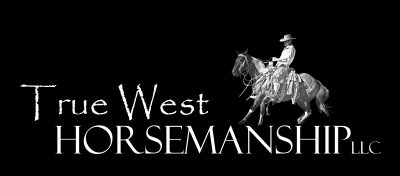How Much is Too Much Exposure?
I’ve written before on the common problem of a rider finding themselves in situations where they and/or their horses are in over their heads. When we bite off more than we can chew or our horses are ready for, there can be many negative results including significant loss of confidence or wrecks that didn’t really have to happen.
There are two sides to these occurrences, as with most things. There is still truth to the statement that learning and growth happen outside the comfort zone for both us and our equine partners and that we risk stagnating or never achieving our dreams if we are not intentional about stretching our limits. It is a question then of balance and how much, when?
Depending on our own personalities and perhaps the temperament of our horse(s), we may error more on one side of this equation or the other – either staying indefinitely in our comfort zones and missing out on things we’d love to do or pushing too hard and destroying our confidence (and our horse’s confidence as well), perhaps even getting injured in the experience.
I thought I’d share an experience of mine that demonstrates some of these things and that stemmed from a common perception among many horse folks. That perception has to do with the idea of “exposure” and, in many cases, involves basically making a horse do something in order for him to gain the experience and thus get to where he’s “OK” with it. In a nutshell, this can work, but many times it is not the best approach or has the exact opposite results than what we are looking for.
We were sorting out bulls last year in Montana, late in the summer. We’d gathered the entire herd in order to move them on to new pasture and had them held up next to some pens. The idea was that we could cut out the bulls and leave them in the pens. I was riding a green colt named Ace that I’d taken some extra time with over the previous couple months, as he’d had an issue with reacting and bucking (typical of his Hancock QH breeding). He was doing very well, had never bucked with me and was quickly gaining great experience. I had helped to move herds of cows with him but had not really introduced him to the idea of cow work or sorting.
For those of you who don’t know, sorting bulls off at the end of breeding season can be a challenging job as some bulls don’t really want to leave. There was one in this case that quickly decided he wasn’t going to cooperate. I had positioned Ace off the bull’s left hip, another rider coming in behind as we drifted the big black beast up the fenceline. Halfway to the pen where we were putting them, is when he decided to change our minds. Quickly turning around, he charged through, scaring Ace and causing him to dart to the left in spite of my trying to help him stand his ground. I knew this was the type of scenario that could convince a young horse that cattle were scary critters that would run them over and, worse still, could deteriorate his hard-won trust in me.
I expressed my concern to those riding with me but they shrugged it off. I thought I’d try again and hoped the bull would play along, but instead basically the same thing happened. When I said something, the reply was that “this is just what he needs”. I disagreed and backed off to help hold the herd – I didn’t want to put him into another situation where he would fail again. A little later I was able to work the gate with him to let bulls by and that provided exposure that was closer to the level he required. In other words, he did need exposure but didn’t need to be repetitively set up to fail.
So whether we are dealing with our own comfort level or that of our horses, we can work out ways to be intentional in an incremental way, building confidence through progressive successes. This won’t always be a smooth road or without setbacks, perhaps, but much trouble can be avoided by understanding where the horse is coming from (background, experience, etc.) and what their perspective on the situation is (how horses view things differently than we do).
The way I put to folks most often is to recognize the “pieces” that make up the “whole”. By knowing your horse as an individual you can address their concerns or fill in their understanding by breaking down scenarios into smaller steps. This often requires us to simulate the situations rather than being in the “real deal” which many times means we’re not in control of the level of exposure.
For instance, after introducing them to cattle, I try to always work a colt on some cows with no real job to do, showing them the general ideal of controlling the movement and direction of the bovine. This helps build both their understanding and confidence and sets them up to succeed when they get started on the payroll.
So as you think about coming into summer and what your aspirations are, begin to make a plan to develop the skills required for both you and your horse. If you are looking for solid resources, be sure and check out our Online Video Library at www.truewesthorsemanship.com
Keep a leg on each side and your mind in the middle!

